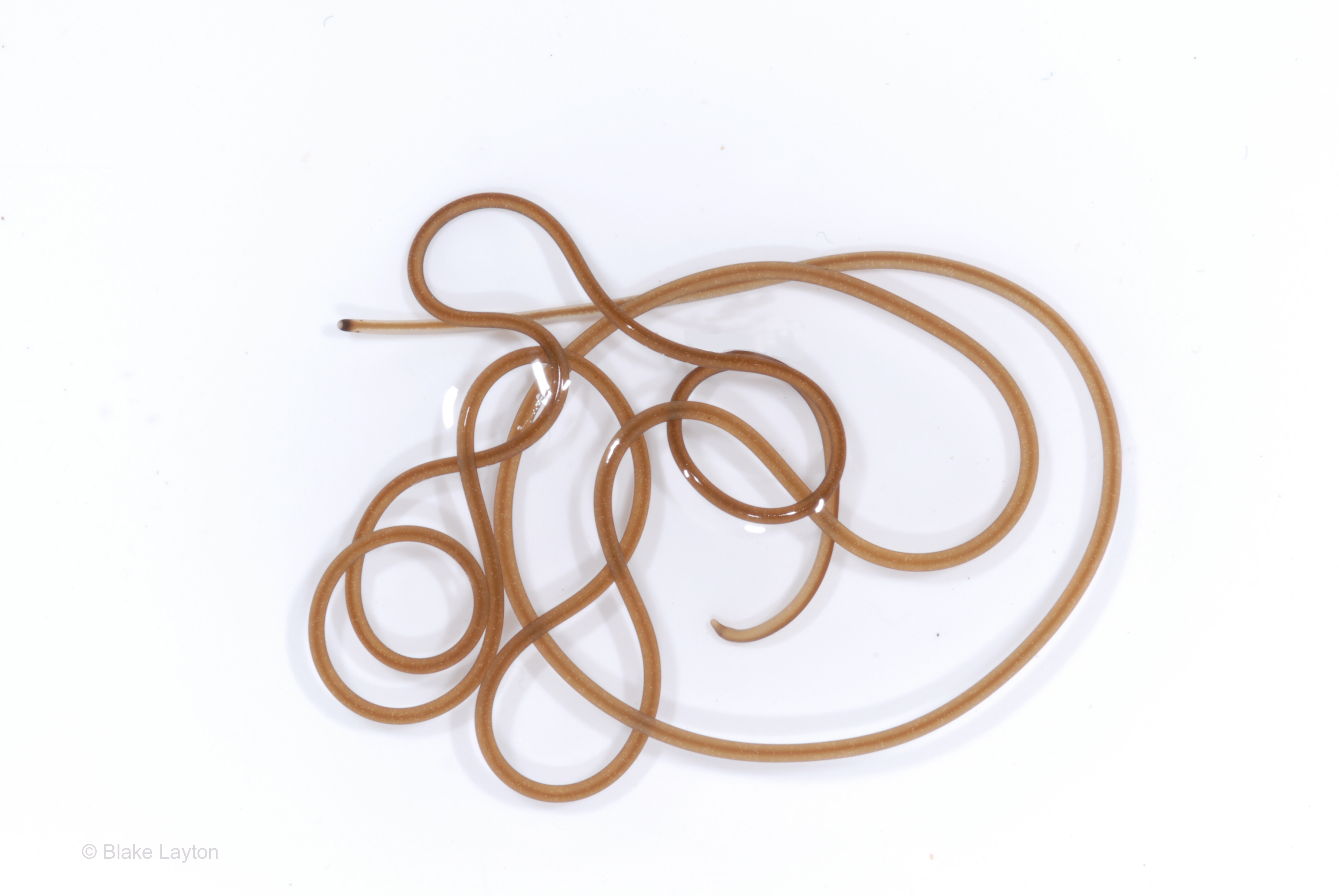Horsehair Worms, Vol. 6, No. 13
Related News
June 20, 2013
April 11, 2013
April 2, 2013
March 14, 2013

Family: Gordiidea
Phylum: Nematomorphora
“We found this creepy-looking worm wiggling about in the dog’s water bowl. Is this some sort of parasite that came out of the dog?”
These are parasites, but they are not parasites of mammals. Horsehair worms are parasites of insects, especially larger insects such as crickets, grasshoppers, cockroaches, mantids, and beetles. Some species also occur in spiders. This is an adult that has recently emerged from its insect host. As their name suggests, horsehair worms are long and thread-like, ranging from 4 to 12 inches in length. Because of their habit of wiggling into a tight, knotty mass, especially when mating or when multiple worms have emerged from the same host, they are also known as gordian worms, an allusion to the legend of the gordian knot puzzle that was “solved” by Alexander the Great.
Adult horsehair worms are usually encountered in places like water troughs, bird baths, swimming pools, showers, bathtubs, and puddles because they need to be in water to mate and lay eggs. Of course, their real habitat is natural bodies of water such as ponds and streams. But how do they get to the water? As they near maturity these parasites trigger behavioral changes in their host, causing them to actively seek out water and jump in. Once the host is immersed in water the adult worms emerge and begin seeking mates. The eggs are deposited in the water, where they hatch into tiny larvae which are then accidentally consumed by the next host. Once inside the host, the larvae bore through the gut wall and begin living and growing as parasites in the body cavity, where they absorb nutrients directly from the host’s blood.
“So, if I really found this thing in the shower, it’s ok? This thing didn’t come out of me?” That’s right. It probably came out of a cricket or roach that went to the shower in search of water and then managed to crawl away after the worm emerged.
Blake Layton, Extension Entomology Specialist, Mississippi State University Extension Service.
The information given here is for educational purposes only. Always read and follow current label directions. Specific commercial products are mentioned as examples only and reference to specific products or trade names is made with the understanding that no discrimination is intended to other products that may also be suitable and appropriately labeled.
Mississippi State University is an equal opportunity institution.